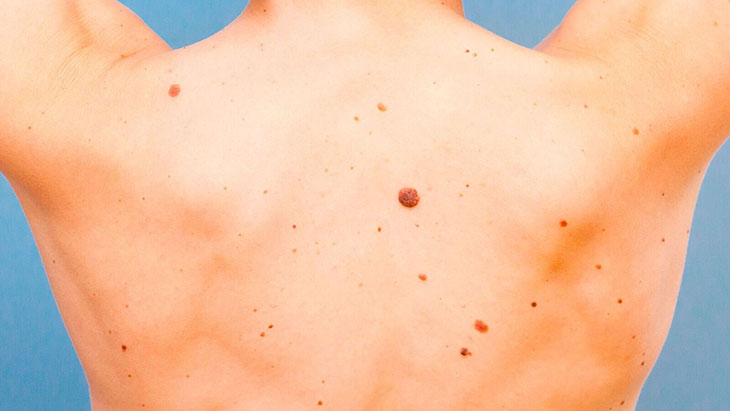7. Large Moles

Moles (nevi) are a form of skin growth that is rather frequent. Clusters of pigment-forming cells lead them to look as tiny, dark brown dots (melanocytes). The majority of people have 10 to 40 moles that form during childhood and adolescence and may alter or vanish over time. The majority of moles are harmless. They seldom develop cancer. It is critical to be aware of changes in your moles and other pigmented areas in order to diagnose skin cancer, particularly malignant melanoma. A malignant mole can be any size, but any lesion that is a quarter inch in diameter or bigger should raise red flags. This is around the size of a pencil eraser. Another red flag is any change in mole size. A dermatologist would prefer to catch a melanoma when it is tiny, so if you are concerned that a mole is displaying any additional warning signs, you should get it checked.
Atypical nevi are irregularly shaped moles that are bigger than usual (larger than a pencil eraser). They feature an irregular color pattern, with dark brown cores and lighter, uneven margins. These moles are usually inherited. People who have atypical nevi may have more than 100 moles and are more likely to develop malignant (cancerous) melanoma. A dermatologist should examine any changes in the mole to identify skin cancer. If a dermatologist decides the mole should be studied further or removed completely, he or she will do a biopsy (small tissue sample of the mole) to analyze thin sections of the tissue under a microscope. This is a straightforward technique. (If the dermatologist suspects the mole is dangerous, cutting it will not cause the cancer to spread.) If the mole is malignant, the dermatologist will remove it entirely by cutting off the mole and a rim of normal skin surrounding it, then sewing the area up.



